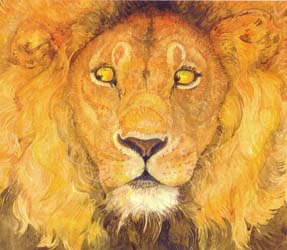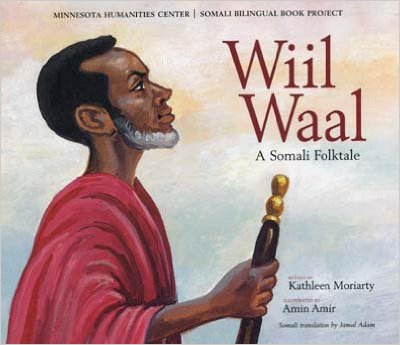 Walk into many a children’s room in a public library and then take a trip to Dewey Decimal number 398.2. If the room is relatively old and has withstood regular weeding schedules then you may find yourself in a remarkably large folktale and fairytale section. The titles, however, will probably be a bit on the dusty side. Long ago, when libraries held the primary purchasing power when it came to children’s literature, they had some sway over publishing. Thanks in large part to their dual appreciation of storytelling and multiculturalism, librarians exhibited a keen love for folktales. These folktales were an attempt to inject into their collections a bit of diversity. The likelihood that they would be able to locate picture books set in contemporary countries was even more unlikely then than it is now, so at the very least they could rely on the large swath of folktales published every year to speak a little to that gap.
Walk into many a children’s room in a public library and then take a trip to Dewey Decimal number 398.2. If the room is relatively old and has withstood regular weeding schedules then you may find yourself in a remarkably large folktale and fairytale section. The titles, however, will probably be a bit on the dusty side. Long ago, when libraries held the primary purchasing power when it came to children’s literature, they had some sway over publishing. Thanks in large part to their dual appreciation of storytelling and multiculturalism, librarians exhibited a keen love for folktales. These folktales were an attempt to inject into their collections a bit of diversity. The likelihood that they would be able to locate picture books set in contemporary countries was even more unlikely then than it is now, so at the very least they could rely on the large swath of folktales published every year to speak a little to that gap.
The rise of the big box bookstores like B. Dalton signaled the beginning of the end of librarians’ sway in this regard. With the public having access to children’s books above and beyond children’s bookstores (if their town was lucky enough to have one) and children’s librarians (ditto), the publishing model changed. Librarians didn’t have the influence they used to, and the call for folktales may also have been hampered by library schools not placing the same emphasis they used to on old-fashioned storytelling. When I joined with New York Public Library in 2004 they were still teaching new hires the finer points of storytelling. By 2008, that training was a thing of the past.
The folktale, however, is by no means dead. While a significant slump occurred over the years as the big publishers moved away from the form, small independent publishers picked up the slack. This year alone I’ve seen folktales coming from folks like Inhabit Media, Wisdom Tales Press, Tuttle Publishing, Sleeping Bear Press, Red Chair Press, Albert Whitman & Co., Fontanka Publishers, and Frances Lincoln Children’s Books. These tales are Russian, Cherokee, Inuit, Vietnamese, Abenaki, and Navajo, amongst others.
Last night I sat down with my daughter and read her Why Mosquitoes Buzz in People’s Ears by by Verna Aardema, illustrated by the Dillons. The book dates back to a time when African folktales (much like folktales by Native Americans) were rarely credited to a country, let alone a tribe. In the case of African folktales the phrase, “An African folktale” was sort of roundly stamped on a book and that was that. Why Moquitoes Buzz in People’s Ears is considered West African, and from what I can tell has been free of the controversy that would today surround a book like Gail E. Haley’s Caldecott winning A Story, A Story, which was merely said to be retelling an “African tale”.
As I read the Aardema book, I got to thinking about African folktales and how few are published these days. Certainly very few folktales are published in general, but of these hardly any hail from specific African nations or tribes anymore. Because New York Public Library always makes a point of including fairytales and folktales on the 100 Books for Reading and Sharing list each year, I flipped through the last ten years’ worth to see how many of the books included were African in origin. What I’m including in this post is by NO means a systematic list. After all, I haven’t been keeping meticulous track over the past decade. Therefore, I would like to encourage you to let me know if you are aware of any particularly good African folktale retellings published between 2004-2015. Tell me and I will include them here.
2015
For this year, I was able to locate two books, which was more than I initially expected. They were:
Party Croc! A Folktale from Zimbabwe by Margaret Read MacDonald. Illustrated by Derek Sullivan
Who Is King?: Ten Magical Stories from Africa by Beverley Naidoo. Illustrated by Piet Grobler
2013
I couldn’t really find anything. I wanted to make an exception with Ashley Bryan’s Can’t Scare Me, but for all that the book makes for an amazing original folktale, insofar as I can tell it is not based on anything but Mr. Bryan’s wonderful imaginings.
2012
I really thought I had a chance including the Botswana story Ostrich and the Lark by Marilyn Nelson, illustrated by six contemporary San artists. However, while it is truly beautiful and feels like a folktale, technically it’s an original story.
2011
In 2011 Nigerian Chinua Achebe’s story How the Leopard Got His Claws was republished from its original 1972 story (originally from Kenya). It was illustrated by Mary GrandPre and was a lush and surprisingly long retelling. That said, it looks like it’s not a traditional folktale but an original story. Worth knowing just the same.
2008
One book I completely missed and am glad to discover now is Wiil Wall: A Somali Folktale by Kathleen Moriarty, illustrated by Amin Amir. It won an Honor from the Children’s Africana Book Award (more on that at the end of this post). Best of all, it’s bilingual in Somali-English.
When John and Caitlin Matthews published Trick of the Tale: A Collection of Trickster Tales, that was really the last time I saw Anansi (in their story “How Ananse Stole All the Stories”), unless you count Eric A. Kimmel’s Anansi’s Party Time, which wasn’t really a folktale.
And that’s all I found.
 Mind you, if we could include Aesop’s tales as African folktales then we get a slightly larger pool from which to draw. The most notable of these would be Jerry Pinkney’s The Lion and the Mouse in 2009, which set the Aesop classic against the Serengeti. In 2014 we saw the stunning The Fox and the Crow by Manasi Subramaniam, illustrated by Culpeo S. Fox, and in 2013 there was Aesop in California by Doug Hansen.
Mind you, if we could include Aesop’s tales as African folktales then we get a slightly larger pool from which to draw. The most notable of these would be Jerry Pinkney’s The Lion and the Mouse in 2009, which set the Aesop classic against the Serengeti. In 2014 we saw the stunning The Fox and the Crow by Manasi Subramaniam, illustrated by Culpeo S. Fox, and in 2013 there was Aesop in California by Doug Hansen.
And of course there’s Egypt. In 2011 Marcia Williams published Ancient Egypt: Tales of Gods and Pharaohs and in 2013 National Geographic published The Treasury of Egyptian Mythology by Donna Jo Napoli, illustrated by Christina Balit. Not really what I’m talking about either, though.
By the way, if you are not aware of them, I encourage you to learn more about an award that would speak to these books. The Children’s Africana Book Awards are of note. As their website reads, “In 1991, the Outreach Council of the African Studies Association accepted a proposal from Africa Access to establish awards honoring outstanding books on Africa published or republished in the United States. The first Children’s Africana Book Awards were presented in 1992. Annually since that time awards are presented to authors and illustrators in two categories, Young Children and Older Readers. Click here for Past Winners for Older Readers.”









 Atinuke, illustrated by Lauren Tobia,
Atinuke, illustrated by Lauren Tobia, Each chapter also has a lesson to be learned, from the power of forgiveness to the unconditional love of family to more difficult topics, such as the breaking down of stereotypes and the prejudice and poverty that is present in both African and Canadian society. Atinuke doesn’t look in-depth at these issues, but she frames it in such a way so young readers can understand it and note its importance to Anna and her friends and family.
Each chapter also has a lesson to be learned, from the power of forgiveness to the unconditional love of family to more difficult topics, such as the breaking down of stereotypes and the prejudice and poverty that is present in both African and Canadian society. Atinuke doesn’t look in-depth at these issues, but she frames it in such a way so young readers can understand it and note its importance to Anna and her friends and family. Ollybolly is a cultural diversity program carried out by the
Ollybolly is a cultural diversity program carried out by the 
I just did a big fairy tale adventure at my library and hardly anybody knows any fairy tales, other than the Disney-fied ones. My teen aide had never heard of Hansel and Gretel. My ex-teacher associate had never heard of Anansi. Seriously? How can you not know who Anansi is??
The Magic Bojabi Tree by Dianne Hofmeyer, illustrated by Piet Grobler, 2013. It was a Washington State Children’s Choice nominee last year. The setting is the African Savannah.
I know Hansel and Gretel. But the only thing I know about Anansi was I think it was a term used in my World of Darkness games. They are were-spiders I believe.
Wow. I just searched my library catalog for African folktales, sorted by date, and I have nothing since 2003.
Noted! And I found an interesting review of it on Africa Access, which I shall include as well. Thanks!
[…] Betsy Bird at Fuse #8 is rightfully mourning the relative dearth of African folktale publishing and simultaneously celebrating one of its legends from the glory days, Verna Aardema. All I can say is God bless Verna Aardema, who knew just how to write a picture-book text that would bring any library story hour to life. Authentic? Not especially; as Barbara Bader wrote for us back in 2007, “in writing picture books, with their special needs, [Aardema] did more than adapt the stories — she pretty much remade them.” But she did something else, too: “Aardema lit upon juicy stories, in a variety of forms, from a number of tribal cultures. In her hands, they didn’t sound alike, and with a judicious selection of illustrators by Atha Tehon and other art directors, they didn’t look alike. Heterogeneous and vigorously alive, Aardema’s improbable body of work was absorbed into the omni-American experience.” […]